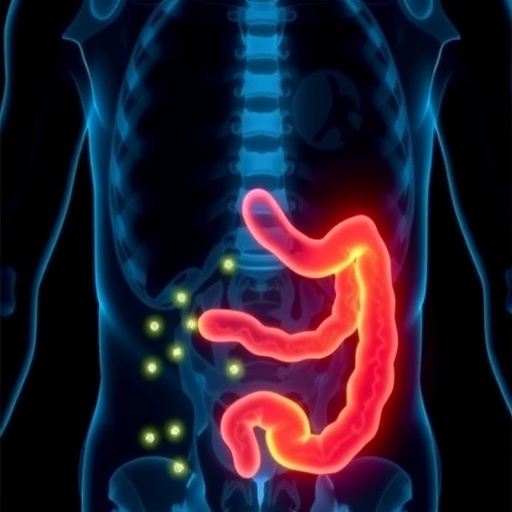Colorectal cancer (CRC) stands as one of the most prevalent and deadly malignancies worldwide, emerging from the lining of the colon or rectum. This insidious disease begins with precancerous polyps that, over time, accumulate genetic and epigenetic alterations leading to malignant transformation. Despite remarkable strides in oncology, the silent progression and often asymptomatic nature of early-stage CRC present substantial challenges to timely diagnosis. As the global burden escalates, scientific focus increasingly aligns with refining screening techniques and point-of-care diagnostics to intercept disease progression at its nascent stage.
At the molecular level, CRC development is conceptualized as a multistep evolutionary process characterized by sequential genetic insults. Key molecular pathways such as the adenoma-carcinoma sequence form the backbone of tumorigenesis. Mutations in pivotal genes—including APC, KRAS, and TP53—disrupt the regulatory machinery of cell growth and apoptosis. Additionally, aberrations in signaling networks such as WNT and TGF-β pathways exacerbate malignant transformation. Intriguingly, heterogeneity within CRC tumors is categorized into molecular subtypes—microsatellite instability (MSI), chromosomal instability (CIN), and consensus molecular subtypes (CMS)—each with distinct biological behaviors and prognostic implications. This granular understanding paves the way for precision diagnostics and tailored therapeutic interventions.
Epidemiological data underscore the multifactorial etiology of CRC, where both genetic predispositions and environmental exposures interplay. Risk elements such as advancing age, hereditary syndromes including Lynch syndrome and familial adenomatous polyposis, and chronic conditions like inflammatory bowel disease create vulnerability to malignant transformation. Concurrently, lifestyle factors wield significant influence; sedentary habits, tobacco usage, excessive alcohol consumption, obesity, and diets rich in red and processed meats elevate CRC risk. Emerging research also implicates complex alterations in gut microbiota composition and persistent inflammatory states as catalysts in colorectal carcinogenesis, revealing new horizons for innovative preventive strategies.
In the landscape of CRC detection, point-of-care diagnostic modalities have dramatically evolved, striving for accuracy, accessibility, and patient compliance. Non-invasive fecal assays such as the Fecal Occult Blood Test (FOBT) have historically provided initial screening options. However, limitations in specificity and false-positive rates, aggravated by dietary interferences, have catalyzed the development of more sensitive assays. The Fecal Immunochemical Test (FIT), targeting human hemoglobin, supplants FOBT by delivering enhanced specificity without dietary restrictions. Furthermore, fecal DNA testing exploits molecular markers including mutations in KRAS and methylation of BMP3, intensifying diagnostic precision, though challenges in false positives necessitate meticulous clinical interpretation.
Beyond stool-based diagnostics, blood-based biomarkers represent a burgeoning frontier in non-invasive CRC detection. The Septin9 assay, targeting methylated DNA signatures circulating in the bloodstream, epitomizes this approach yet grapples with limited sensitivity in detecting pre-malignant adenomas. Expanding this paradigm, liquid biopsy technologies analyze circulating tumor DNA (ctDNA), providing dynamic insights into tumor genomics and real-time disease monitoring. Despite promising clinical applications, liquid biopsy remains complementary to existing screening frameworks due to constraints in sensitivity and cost-effectiveness.
Endoscopic interventions retain their status as the definitive CRC diagnostic and interventional tools. Colonoscopy, the gold standard, offers direct visualization, enabling both detection and therapeutic excision of polyps, distinctly reducing cancer incidence. However, the invasiveness, requisite bowel preparation, and associated patient discomfort pose significant barriers to widespread screening adherence. Alternative approaches, including sigmoidoscopy and capsule endoscopy, address certain limitations but are constrained by coverage gaps and diagnostic comprehensiveness, particularly for proximal colon lesions.
Radiological techniques complement endoscopic methods, offering non-invasive visualization of the colorectal tract. Computed Tomography (CT) colonography generates three-dimensional images of the colon, facilitating polyp detection without the invasion of traditional endoscopy. Nevertheless, the need for bowel cleansing and potential omission of smaller lesions restrict its applicability. Historic methods such as barium enema have largely receded due to inferior sensitivity and specificity compared to contemporary imaging and endoscopy.
Recent technological advancements are revolutionizing CRC diagnostics by integrating cutting-edge molecular and computational platforms. Single-cell sequencing (SCS) disentangles intratumoral heterogeneity, charting the landscape of genetic alterations at unprecedented resolution, vital for understanding tumor evolution and therapeutic resistance. Complementing this, spatial transcriptomics (ST) contextualizes gene expression within the histological architecture, offering nuanced subtype stratification and potential prognostic biomarkers. Artificial intelligence (AI) applications are redefining endoscopic practice by enhancing polyp detection accuracy, automating histopathological evaluations, and synthesizing multi-omic datasets into comprehensive risk models, heralding a new era of personalized medicine.
Lifestyle modification remains a cornerstone in mitigating CRC risk. Establishing dietary patterns rich in fiber while limiting red and processed meat intake, fostering regular physical activity, and abstaining from tobacco and excessive alcohol consumption significantly decrease disease incidence. In parallel, chemopreventive research explores natural compounds and prebiotics as adjuvants to fortify the intestinal environment and inhibit carcinogenic pathways, potentially complementing traditional prevention paradigms.
Despite the progress in screening technology and understanding CRC biology, substantial hurdles persist in global implementation. Screening adherence varies widely across populations due to socioeconomic factors, access disparities, and public awareness. The lack of uniform international guidelines confounds standardized care delivery. Moreover, current methods insufficiently detect early, flat, or sessile lesions, necessitating innovations that balance sensitivity with minimally invasive patient experiences.
Looking ahead, the integration of multi-omics data with advanced analytics promises transformative potential in CRC management. A precision screening framework combining genetic, epigenetic, proteomic, and metabolomic profiles could identify high-risk individuals with unparalleled specificity. Coupled with AI-driven interpretation, such an approach would enable real-time, adaptive screening intervals, and individualized preventive strategies. Simultaneously, public health initiatives must amplify education and access to catalyze lifestyle changes and equitable screening uptake worldwide.
In conclusion, colorectal cancer remains a formidable health challenge with significant morbidity and mortality on a global scale. However, multidisciplinary advances spanning molecular biology, diagnostic technology, and computational intelligence provide a beacon of hope. By converging innovative screening modalities, personalized interventions, and proactive lifestyle management, the medical community edges closer to the ultimate goal of reducing CRC burden and enhancing patient survival.
Subject of Research: Advancements in screening and point-of-care diagnostics for colorectal cancer
Article Title: An Overview of Advancements in Screening Methods and Point-of-care Diagnostics for Colorectal Cancer
News Publication Date: 28-May-2025
Web References:
https://www.xiahepublishing.com/journal/csp
http://dx.doi.org/10.14218/CSP.2025.00006
Image Credits: Sandip V. Pawar
Keywords: Colorectal cancer, Cancer, Screening, Point-of-care diagnostics, Molecular subtypes, Single-cell sequencing, Artificial intelligence




